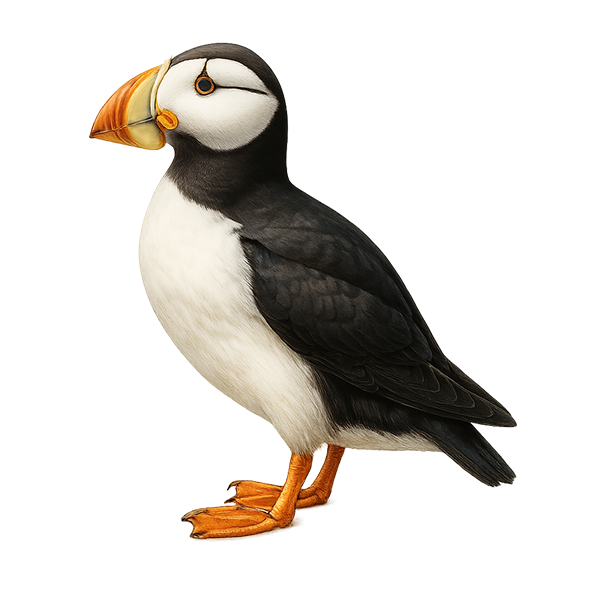Your wildlife photography guide.
Explore the horned puffin in detail, study its behavior, prepare your shots.
Where to observe and photograph the horned puffin in the wild
Learn where and when to spot the horned puffin in the wild, how to identify the species based on distinctive features, and what natural environments it inhabits. The WildlifePhotographer app offers tailored photography tips that reflect the horned puffin’s behavior, helping you capture better wildlife images. Explore the full species profile for key information including description, habitat, active periods, and approach techniques.
Horned Puffin
Scientific name: Fratercula corniculata

IUCN Status: Least Concern
Family: ALCIDAE
Group: Birds
Sensitivity to human approach: Suspicious
Minimum approach distance: 10 m
Courtship display: May to June
Incubation: 36-42 jours
Hatchings: June to August
Habitat:
Rocky cliffs, coastal areas, isolated islands
Activity period :
Primarily active during the day, with peak activity in the morning and late afternoon.
Identification and description:
The Horned Puffin, Fratercula corniculata, is a striking seabird known for its colorful bill and distinctive black feather "horns" above its eyes. It primarily inhabits the northern Pacific coasts, especially in Alaska and eastern Russia. This bird is well adapted to marine life, spending most of its time at sea, feeding on fish and small invertebrates. During the breeding season, it nests in rocky crevices on steep cliffs. The Horned Puffin is an excellent diver, capable of descending several tens of meters underwater to catch its prey. Although its populations are currently stable, it is sensitive to climate change and marine pollution.
Recommended lens:
400mm – adjust based on distance, desired framing (portrait or habitat), and approach conditions.
Photography tips:
To photograph the Horned Puffin, aim for the golden hours of morning or evening to take advantage of soft light that will highlight the vivid colors of its bill. Use a telephoto lens of at least 400mm to capture detailed images without disturbing the bird. Be patient and wait for the puffin to perch on a cliff or dive for fish. A tripod can be helpful to stabilize your camera, especially if using a long focal length.
The WildlifePhotographer App is coming soon!
Be the first to explore the best nature spots, track rutting seasons, log your observations, and observe more wildlife.
Already 1 432 wildlife lovers subscribed worldwide

